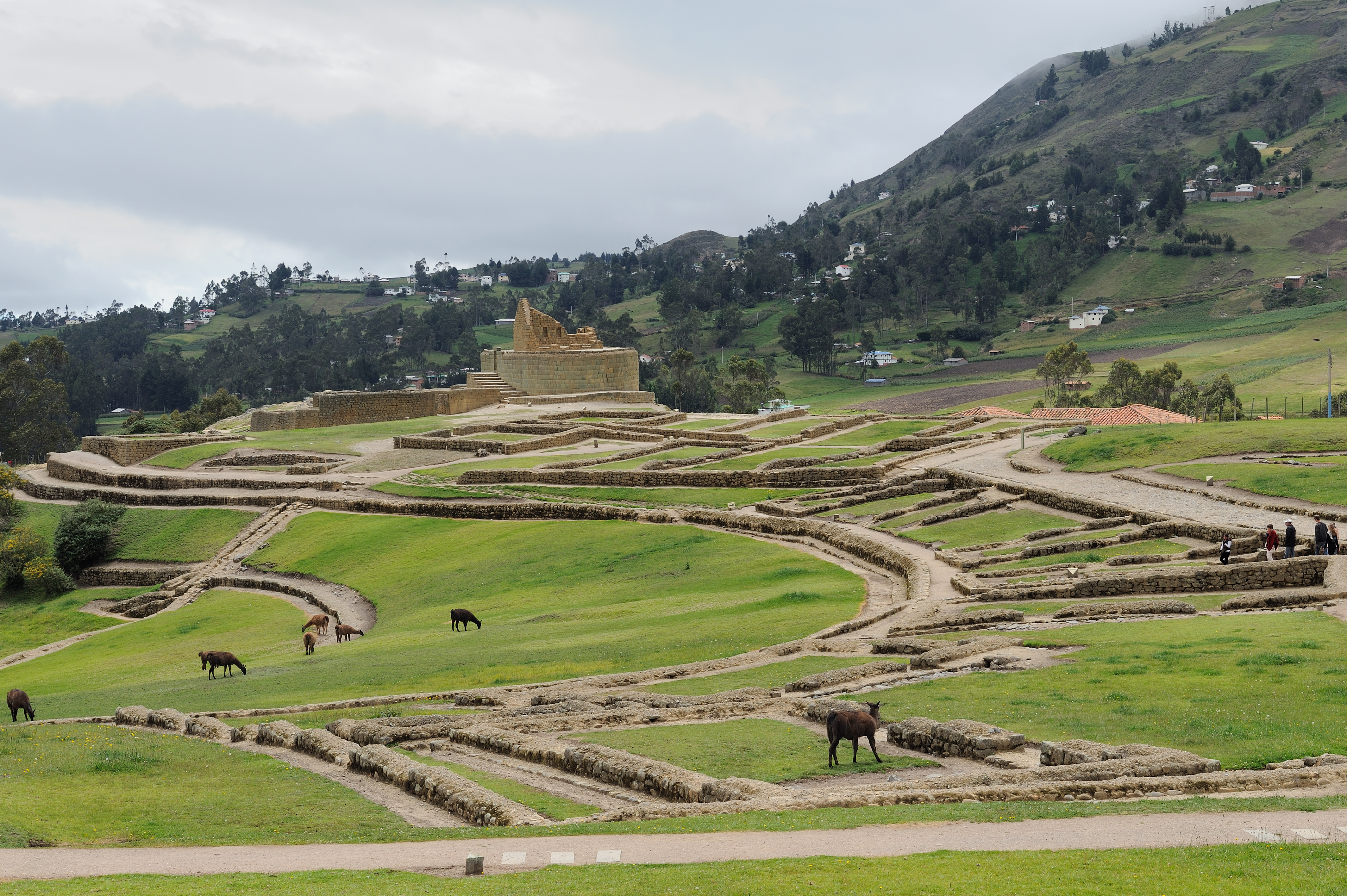Ingapirca on:
[Wikipedia]
[Google]
[Amazon]
Ingapirca (

 This area had long been settled by the
This area had long been settled by the

Official website of the archaeological complex
{{Authority control Populated places in Cañar Province Archaeological sites in Ecuador Buildings and structures in Cañar Province Tourist attractions in Cañar Province Inca
Kichwa
Kichwa (, , also Spanish ) is a Quechuan language that includes all Quechua varieties of Ecuador and Colombia ('' Inga''), as well as extensions into Peru. It has an estimated half million speakers.
Classification
Kichwa belongs to the Nor ...
: ''Inka Pirka'', "Inca wall") is a town in Cañar Province, Ecuador
Ecuador, officially the Republic of Ecuador, is a country in northwestern South America, bordered by Colombia on the north, Peru on the east and south, and the Pacific Ocean on the west. It also includes the Galápagos Province which contain ...
, and the name of the older Inca
The Inca Empire, officially known as the Realm of the Four Parts (, ), was the largest empire in pre-Columbian America. The administrative, political, and military center of the empire was in the city of Cusco. The History of the Incas, Inca ...
ruins and archeological site nearby.
These are the largest known Inca ruins in Ecuador. The most significant building is the Temple of the Sun, an elliptically shaped building constructed around a large rock.
History

 This area had long been settled by the
This area had long been settled by the Cañari
The Cañari (in Kichwa: Kañari) are an indigenous ethnic group traditionally inhabiting the territory of the modern provinces of Azuay and Cañar in Ecuador. They are descended from the independent pre-Columbian tribal confederation of the ...
indigenous people, who called it ''Hatun Cañar.'' As the Inca Empire expanded into southern Ecuador, the Inca Túpac Yupanqui encountered the Cañari "Hatun Cañar" tribe. He had difficulties in conquering them. He used different political strategies, marrying the Cañari princess and improving the Cañari city of ''Guapondelig,'' calling it Tumebamba
Tumebamba, Tomebamba (hispanicized spellings), or Tumipampa (Kichwa language, Kichwa for "''Knife Field''", Tumi: ''Knife'', Pampa (disambiguation), Pampa: ''Field'') was a former main regional city in the Inca Empire. Tumebamba was chosen by the ...
or Pumapungo (present-day Cuenca).
The Inca and Cañari decided to settle their differences and live together peacefully. The astronomical observatory was built under Inca Huayna Capac
Huayna Capac (; Cuzco Quechua: ''Wayna Qhapaq'' ) (before 14931527) was the third Sapa Inca of Tawantinsuyu, the Inca Empire. He was the son of and successor to Túpac Inca Yupanqui,Sarmiento de Gamboa, Pedro; 2015, originally published in Sp ...
. The Inca renamed the city as Ingapirca and kept most of their distinctive customs separately, as the Cañari did theirs. Although the Inca were more numerous, they did not demand that the Cañari give up their autonomy.
The castle complex is of Cañari-Inca origin. Its purpose is uncertain. The complex was used as a fortress and storehouse from which to resupply Inca troops en route to northern Ecuador. At Ingapirca they also developed a complex underground aqueduct system to provide water to the entire compound.
The Temple of the Sun is the most significant building whose partial ruins survive at the archeological site. It is constructed in the Inca way without mortar, as are most of the structures in the complex. The stones were carefully chiseled and fashioned to fit together perfectly. It was positioned in keeping with their beliefs and knowledge of the cosmos. Researchers have learned by observation that the Temple of the Sun was positioned so that on the solstice
A solstice is the time when the Sun reaches its most northerly or southerly sun path, excursion relative to the celestial equator on the celestial sphere. Two solstices occur annually, around 20–22 June and 20–22 December. In many countries ...
s, at exactly the right time of day, sunlight would fall through the center of the doorway of the small chamber at the top of the temple. Most of this chamber has fallen down.
The people had numerous ritual celebrations at the complex. They prepared gallons of a local fermented drink
This is a list of fermented foods, which are foods produced or preserved by the action of microorganisms. In this context, Fermentation in food processing, fermentation typically refers to the fermentation of sugar to ethanol, alcohol using yeas ...
to consume in the rituals of these festivals. As sun and moon worshipers, they tried to be as close to their gods as possible, and built their monuments high in the mountains.
The weather changes rapidly, within minutes, ranging from calm and sunny one minute and rainy, windy, and cold another minute. This climate volatility is typical year round. The people felt strongly that this was the place where the gods had led them, regardless of the climate.
Charles Marie de La Condamine
Charles Marie de La Condamine (; 28 January 1701 – 4 February 1774) was a French explorer, geographer, and mathematician. He spent ten years in territory which is now Ecuador, measuring the length of a degree of latitude at the equator and pre ...
became the first European to make a scientific description of Ingapirca, which he visited in 1739 in the course of his expedition to South America.
Map

See also
* Lost Pyramid of PuñayReferences
External links
*Official website of the archaeological complex
{{Authority control Populated places in Cañar Province Archaeological sites in Ecuador Buildings and structures in Cañar Province Tourist attractions in Cañar Province Inca